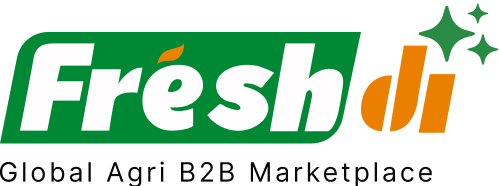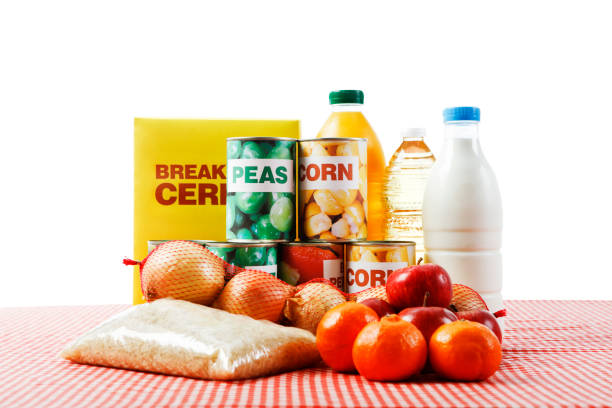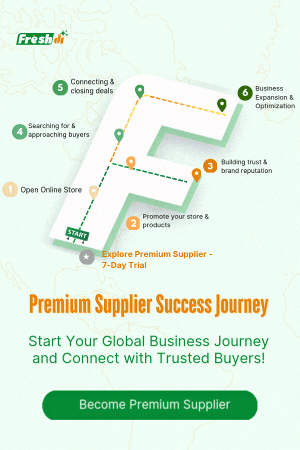Introduction – Current State of Play: The Food Sector in Thailand
Thailand’s food industry is undergoing a whirlwind of transformation as of October 2025. If you’re buying, selling, or sourcing from Thailand, now is the time to stay sharp and stay informed. Why? Because the country’s food sector is being reshaped by a mix of trade policy shifts, weather-related risks, and supply chain turbulence.
Let’s start with trade. Thailand is actively negotiating trade rules with the United States, focusing on rules of origin and regional value content. These talks aim to tackle issues like stiff U.S. tariffs, a strong baht, and economic strains such as household debt. That’s not all—tariffs on U.S. corn imports are being slashed to help reduce animal feed costs, a move that could shake up the livestock and poultry sectors.
Meanwhile, rice exports are a mixed bag. While exports to the U.S. are up 4.3%, total shipments fell 25% in the first seven months of the year. On the flip side, sugar syrup exporters are facing a crisis after China banned imports due to hygiene concerns—costing Thai firms an estimated $60 million.
Add to that the looming threat of drought. With El Niño in full swing, rainfall could fall short by 10% during the monsoon season, potentially disrupting rice and sugar supplies for years. And if that’s not enough, fertilizer demand is dropping due to low rice prices, putting pressure on farmers’ operating margins.
In short? It’s a high-stakes environment. Companies need to stay agile, track developments closely, and pivot fast. That’s where platforms like Freshdi come in—offering real-time supplier insights, RFQ trends, and market updates to help you stay ahead.
Deep Dive – Breaking News: Critical Updates & Their Effects
Thailand’s food market is riding a wave of disruption and innovation. Let’s break down what’s making headlines and how it’s shaping the future.
1. Rise of the Health-Conscious Consumer
A surprising 65% of Thai consumers now follow a flexitarian diet. That’s driving an uptick in demand for plant-based and healthier food options. Restaurants are adapting fast, and food producers are scrambling to innovate.
2. Digital Transformation is Here
With internet penetration at nearly 78%, food delivery apps and cloud kitchens are booming. Expect more ghost kitchens popping up across Bangkok and beyond. Convenience is king, and digital is the highway.
3. Convenience Stores Take Over
Thailand now boasts over 20,000 convenience stores. These aren’t just for snacks anymore—they’re hotbeds for ready-to-eat meals and fast food offerings. For suppliers, that’s a major distribution channel.
4. Poultry Exports Could Soar
Thanks to a bird flu outbreak in Brazil—the world’s top poultry exporter—Thailand’s poultry industry is set to benefit. Add lower feed costs to the mix, and Thai producers are primed for export growth.
5. Dairy Supply Chain Gets Smarter
Fonterra has revamped its Thai operations, slashing lead times by 28% and boosting forecast accuracy by 40%. That’s great news for dairy buyers and a testament to the power of supply chain tech.
6. Strategic Investments Are Rolling In
- Marubeni Corporation just invested in a top Thai condiment manufacturer, signaling confidence in the region.
- Thaifoods Group is pouring up to 3.5 billion baht into retail expansion.
- Even Hyundai is getting in on the action with a $28 million investment in EV infrastructure—leveraging the same supply chain capabilities that power Thailand’s food exports.
Top 10 Verified Food Suppliers in Thailand – Relevant in the Current Climate
The following food suppliers are verified and ranked based on their export performance, certifications, innovation, and buyer reviews on Freshdi. These companies have demonstrated agility and reliability in a volatile market.
-
E.G.G. Corporation Co., Ltd.
Specializes in compostable food packaging, aligning with Thailand’s growing sustainability trends. -
Khumsub Asia Goods Trading Co., Ltd.
Offers high-grade wheat starch, ideal for food processing and gluten-free products. -
WERRWUNG TRADING THAILAND
Known for seasoning solutions like MSG, a staple in both domestic and export markets. -
P.D. NUTRITION CO., LTD.
Health-focused condiments that appeal to keto and organic consumers. -
MeV Fallin
Specializes in premium pistachios, perfect for health-conscious snackers. -
SUKSAWAD CONVERTING CENTER CO.,LTD.
Supplies fresh herbs and vegetables, catering to both modern and traditional cuisine. -
Global Export 009 Limited Partnership
A go-to source for fresh nuts and superfoods. -
R & B Food Supply Public Company Limited
Provides breadcrumbs and additives widely used in processed food manufacturing. -
M A P Food Co.,Ltd
Offers a variety of processed food products with international certifications. -
TRIPLE ONE DISTRIBUTION COMPANY LIMITED
Specializes in ready-to-eat dried seafood, a growing segment in Asian snack markets.
Dynamic Ranking Note: Keep in mind that platforms like Freshdi frequently update supplier rankings with real-time performance data, including “Top Performing Suppliers of the Month” based on RFQs, buyer reviews, and fulfillment metrics.
Market Navigation – Strategic Responses to The Current Food Landscape in Thailand
So, where do things go from here? Let’s explore how buyers and businesses can respond to the latest developments.
Opportunities to Seize
- Capitalize on Wellness Trends: The surge in health-focused eating is real. Think organic, keto-friendly, plant-based—these categories are ripe for growth.
- Ride the Tourism Wave: As tourists return, demand for authentic Thai foods at restaurants and hotels is climbing. That’s your cue to stock up on spices, sauces, and traditional ingredients.
- Leverage Export Strengths: Thailand remains a powerhouse in rice, canned seafood, and tropical fruits. These categories are still hot in global markets.
Risks to Navigate
- Regulatory Headwinds: Importers face red tape—from labeling rules to FDI restrictions. Don’t go in blind; work with local experts or consultants.
- Strong Local Competition: Giants like CP Group own the supply chain end-to-end. Foreign businesses must offer something unique or build strong local alliances.
- Weather Uncertainty: Drought and El Niño are long-term threats. Diversify your sourcing to avoid over-reliance on vulnerable crops.
Smart Sourcing Strategies
- Build Strategic Partnerships: Long-term relationships with suppliers build trust and improve reliability.
- Invest in Quality Control: Use third-party inspections and audits to ensure compliance and consistency.
- Use Digital Platforms Like Freshdi: Access tools for supplier verification, market insights, RFQ tracking, and dynamic supplier performance ratings.
Short-Term Outlook
Expect steady growth in health-oriented foods, snacking products, and ready-to-eat meals. However, supply chain hiccups and regulatory hurdles will persist. Agility and innovation will be the name of the game.
Recent Trends Worth Watching
- Sustainability is Non-Negotiable: Consumers and governments alike are demanding greener practices.
- Tech-Driven Transparency: Blockchain in the food supply chain is gaining traction—think of it as the food industry’s truth serum.
- Diversified Product Offerings: From plant-based meats to functional beverages, Thai suppliers are getting creative.
Conclusion – Key Takeaways for Businesses in a Fast-Moving Market
The Thai food sector in 2025 is anything but static. From trade negotiations with the U.S. to climate threats and digital disruption, it’s a landscape in flux.
What does this mean for your business?
You need to be nimble, informed, and connected. Whether you’re sourcing rice, condiments, or nuts, staying updated on trade dynamics, consumer trends, and supply chain shifts is crucial. And with platforms like Freshdi, you’re not going it alone—you get verified supplier data, breaking market insights, and real-time RFQ alerts tailored to your needs.
Checklist: Sourcing Food from Thailand in 2025
✅ Monitor trade developments (especially U.S.-Thailand relations)
✅ Watch for weather alerts and drought projections
✅ Focus on health-conscious and sustainable product categories
✅ Strengthen relationships with verified local suppliers
✅ Use Freshdi to track market shifts and identify top-performing suppliers
✅ Be prepared to pivot sourcing strategies quickly
How Freshdi Empowers Modern Food Buyers
- 🔍 Real-Time Market Insights
- 📈 Dynamic Supplier Rankings
- 📬 Alerts on Major RFQ Shifts
- ✅ Supplier Verification Tools
- 🤝 Seamless Buyer-Supplier Connections
Think of it as your command center for smart, strategic sourcing in Thailand’s ever-changing food landscape.
FAQs
1. What are the most in-demand food categories in Thailand right now?
Health-focused foods like plant-based products, organic ingredients, and functional beverages are trending due to growing health awareness.
2. How can I verify Thai food suppliers before making a deal?
Use platforms like Freshdi to access verified supplier profiles, buyer reviews, and certification details.
3. Is the drought in Thailand affecting food exports?
Yes, especially rice and sugar. El Niño conditions are expected to cause long-term disruptions, so plan for alternative sourcing if needed.
4. What do recent trade talks with the U.S. mean for food buyers?
They could lead to reduced tariffs and improved supply chain access—great news if you’re sourcing animal feed or processed foods.
5. Why are convenience stores important in Thailand’s food market?
With over 20,000 outlets, they are key channels for distributing ready-to-eat meals and fast-moving food products.
References
- Reuters – Thailand negotiating with U.S. on trade rules
- Reuters – Thailand to cut tariffs on U.S. corn
- AJOT – Drought threatening sugar and rice supply
- Mordor Intelligence – Foodservice Trends in Thailand
- Ken Research – Thailand Food Market Insights
- Freshdi – Verified Food Suppliers in Thailand


